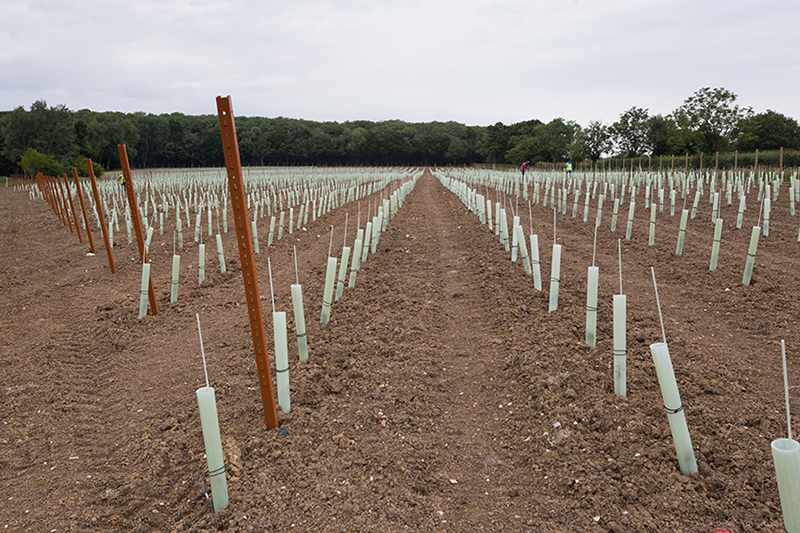Is your trellis ready for machinery this season?
• www.vine-works.com • sales@vine-works.com • 01273 891777
Over the course of a vineyard’s life, it is inevitable that labour costs will increase as the vineyard requires ongoing attention and more management.
Finding ways to mechanise tasks can help stabilise these costs over an extended period of time and potentially even reduce expenses where activities can be assisted or complemented by machine. Mechanisation cannot replace hand labour in all tasks, but it can allow the replacement of seasonal labour in some areas. However, it is important to ensure your trellising system is suitable and durable enough to withstand mechanisation.
The most common activities that can be either fully mechanised or assisted with mechanisation are: pre-pruning of vines, removal of prunings, leaf removal, vine trimming and to a very minor extent in this country harvesting.
A strong, high-quality trellis system is paramount for coping with large levels of crop load and for withstanding minor scrapes by tractors or other equipment. A strongly supported grapevine can facilitate growth of a canopy that provides uniform growth and sunlight penetration. Metal hot-dipped galvanised posts of a gauge of 1.5mm for intermediates and 2.5mm for end posts are ideal for this purpose. They afford a rigid structure, are durable and narrow enough that they don’t intrude into the alley and impede operations.
Trellis system checklist:
Metal or fibreglass
Use robust stable rods to provide resistance to sensor bars when using inter-vine cultivators and weeding implements. This is particularly crucial in a vineyard’s younger years until the trunk is fully formed.
Broken/damaged posts
Replacement or repair of broken and damaged posts will mean that damaged posts are unlikely to hinder mechanical operations. After pruning and before tying down is the best time to conduct most major repairs as they are easily visible once the canopy has dropped.
Height of posts
The majority of vineyard intermediate posts are 2.5m in length and it is recommended that these are installed 0.7m into the ground for maximum stability. Making sure that these posts are uniform in height throughout the vineyard will reduce impact and damage with machinery that operates over the row.
End post assemblies
Installation of sturdy end assemblies, (appropriate anchors and secure tie backs to support the end posts) are requisite for providing sufficient support for a strong structural trellis system.
Tension of wires
One key aspect of the trellising system that will require regular attention is the wire. The fruiting and foliage wires must be kept tight. Reducing the amount of slack fruiting and foliage wires is imperative to support the vine and canopy, but also to improve the effectiveness of using mechanical implements, reducing breakages. This is typically achieved through the use of chains and hangers to tension on metal and wood posts and with Gripple attachments for the fruiting wire; the Gripple Tensioning Tool is ideal for this purpose.
By regularly checking your trellising system and maintaining it to the highest standards, you are giving your vines the best opportunity to grow to their full potential, reducing maintenance and potentially saving on hand labour costs throughout the season.




